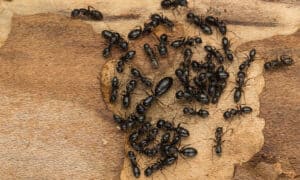Ants, those small but mighty creatures, have long fascinated and perplexed us. From their impressive social structure to their extraordinary ability to communicate and cooperate, ants are an integral part of our ecosystem. But why do ants exist? In this article, we delve into the captivating world of ants. We will uncover the vital roles they play in maintaining the delicate balance of nature. As diligent scavengers, these industrious insects help control populations of pests while aerating soil through their elaborate tunnel systems. Join us on a journey to discover how ants contribute to the environment in ways that often go unnoticed.
Ant Overview
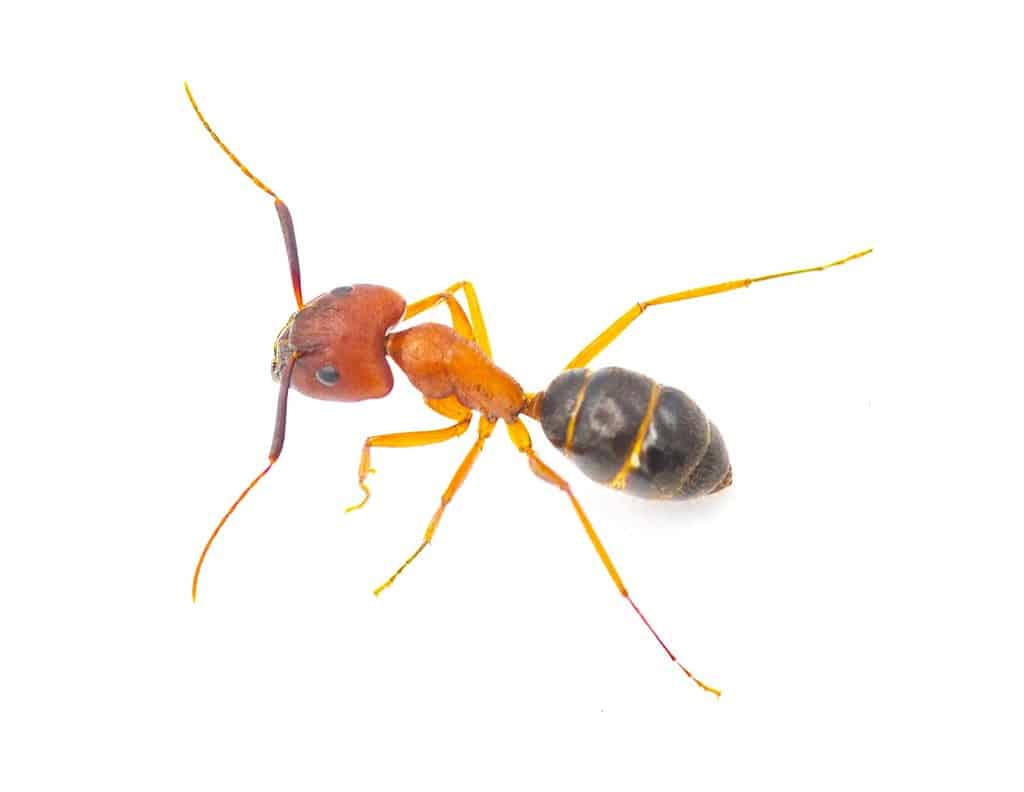
The ecosystems of planet Earth rely on ants in many important ways.
©Chase D’animulls/Shutterstock.com
Ants, despite being often labeled as pests, possess several admirable qualities that should command our respect and appreciation. These tiny creatures exhibit traits such as trustworthiness, thriftiness, loyalty, and bravery. Moreover, they play a crucial role in their communities and ecosystems by diligently carrying out their tasks with unwavering dedication.
Ants are known for their industrious nature and the immense benefits they provide to their surroundings. Within their colonies, these remarkable insects selflessly serve their community while displaying unwavering devotion toward their own families. Their commitment to the greater good is truly awe-inspiring.
What sets ants apart is not just their work ethic but also the astonishing efficiency and complexity with which they operate. They have an intricate network of communication established through chemical signals. This allows them to coordinate seamlessly when gathering food or defending against predators. This level of organization within ant societies is bewildering in its intricacy yet predictable in its consistent functioning.
Despite all this hard work and societal responsibility, ants still manage to find time for leisure activities like joining humans for picnics. A testament to their ability to balance work and play even amidst demanding responsibilities.
In conclusion, it is essential that we shift our perspective on ants beyond seeing them solely as nuisances invading our homes or gardens. By recognizing the incredible attributes they embody – trustworthiness, thriftiness, loyalty, bravery – alongside the invaluable contributions they make to ecosystems through tireless labor and complex social structures, we can cultivate a newfound admiration for these remarkable creatures who exemplify
Ant History
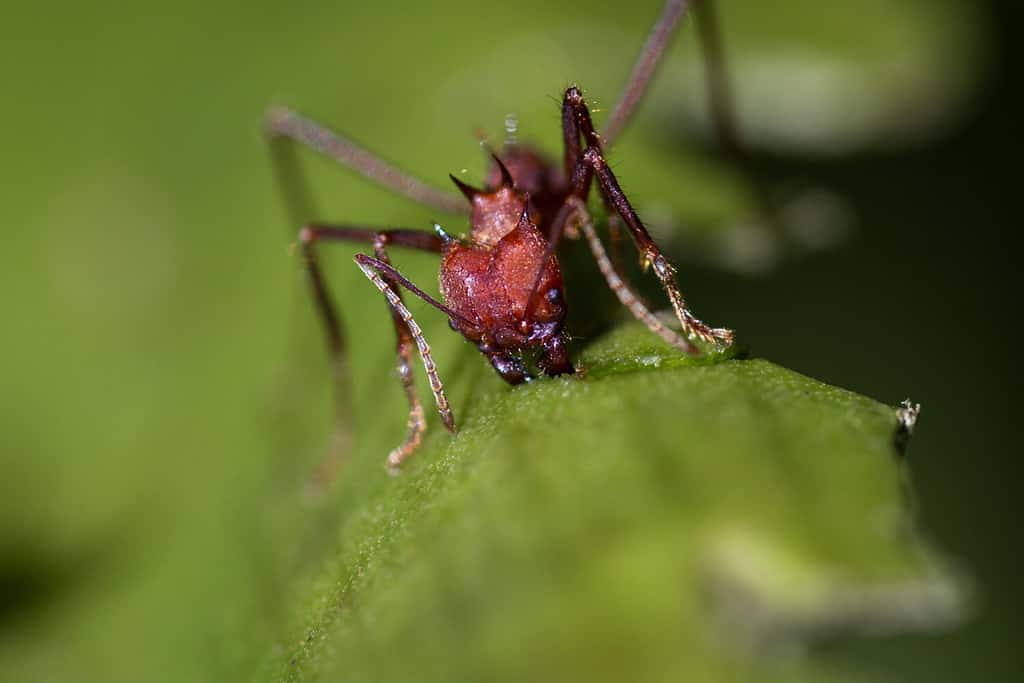
Did you know that ants were alive on Earth with dinosaurs?
©Nature’s Charm/Shutterstock.com
Ants have a remarkable history that spans millions of years. These tiny creatures have proven themselves to be true survivors, with their adaptability and resourcefulness enabling them to thrive in diverse environments across the globe. In fact, ants have been roaming the earth since the middle of the Cretaceous Period, which dates back approximately 80 million years. This means they not only witnessed but also managed to endure the catastrophic mass extinction event that wiped out dinosaurs around 65 million years ago.
The sheer number and variety of ant species further exemplify their resilience and success as a group. With around 14,000 known species currently documented by scientists, it is possible that there are still countless more awaiting discovery. From the frigid lands near the arctic circle to the southernmost regions of Tierra del Fuego and southern Africa, ants have spread themselves across terrestrial surfaces worldwide.
Their ability to occupy such diverse habitats can be attributed to their highly specialized adaptations. Ants possess an array of unique characteristics and behaviors tailored for survival in specific ecological niches. Whether it’s building intricate underground colonies or constructing elaborate leaf nests high up in trees, ants exhibit an unparalleled level of specialization within their respective ecosystems.
Aerate Soil
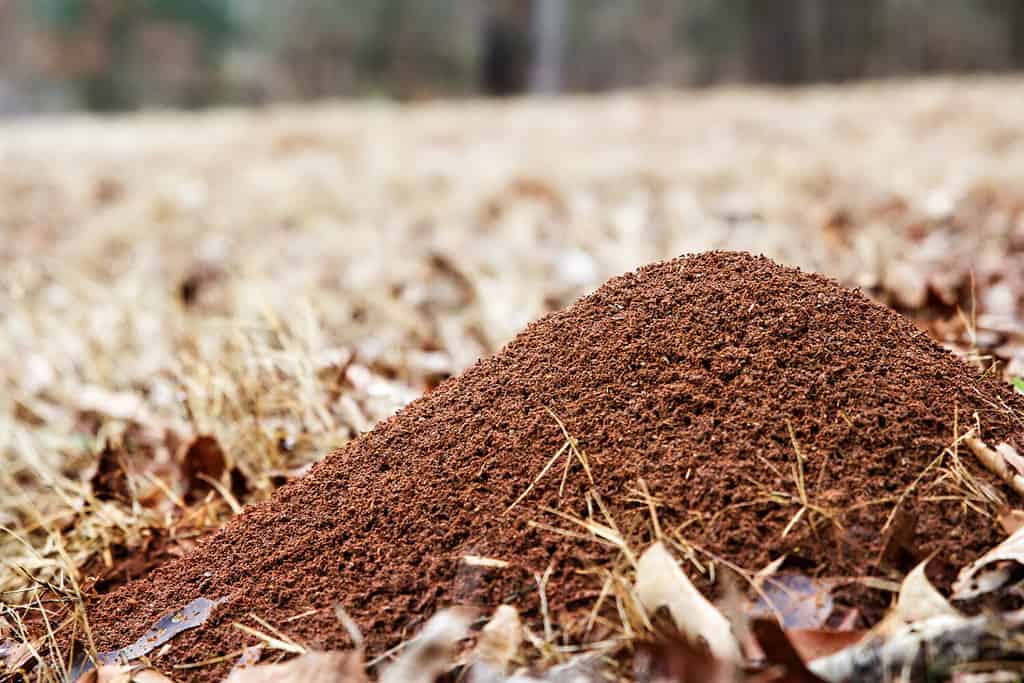
Soil aeration is a very valuable service that ants provide for us for free.
©Tracey Patterson/Shutterstock.com
Ants, with their remarkable ability to dig intricate galleries and tunnels, play a crucial role in the process of soil aeration. As they tirelessly navigate through the earth, these industrious insects bring pebbles and particles from deeper layers of soil to the surface. This constant movement not only helps them construct and maintain their colonies but also has far-reaching benefits for the environment.
Similar to other ant species, carpenter ants exhibit an exceptional work ethic when it comes to soil manipulation. These efficient workers contribute significantly to tillage activities by moving comparable amounts of soil as earthworms do. Through this ongoing effort, ants effectively loosen the compacted soil structure, allowing for improved air circulation and water infiltration into the ground.
Why do ants exist? The impact of ants on soil aeration cannot be underestimated! As they excavate their intricate networks of chambers and passageways beneath our feet, they create pathways that facilitate better diffusion of oxygen throughout the subsurface layers. In turn, this increased availability of oxygen promotes healthier root growth for plants while supporting diverse underground ecosystems.
Furthermore, by disturbing the topsoil during their excavation endeavors, ants enhance its permeability by breaking up clumps or packed particles that impede water movement. This enhanced porosity allows rainwater or irrigation to infiltrate more easily into lower layers instead of simply running off or evaporating at the surface. It effectively contributes to groundwater recharge and reduces erosion risks.
Why Do Ants Exist? To Spread Seeds!

Another important job for ants is carrying plants and seeds into new territories.
©iStock.com/scigelova
Ants play a vital role in the natural world by engaging in seed spreading. This enables plants to disperse into new areas and thrive. As these tiny creatures scurry across the forest floor or traverse vast grasslands, they pick up seeds. They eat structures like elaiosomes – nutrient-rich appendages attached to some seeds. Acting as unwitting gardeners, ants carry these seeds over considerable distances before depositing them in different locations.
The dispersal of seeds by ants, known as myrmecochory, provides numerous benefits for both the plant species and the environment as a whole. By transporting seeds away from parent plants, ants ensure that offspring are not overcrowded. This helps plants establish themselves independently, reducing competition for resources such as sunlight, water, and nutrients. This process promotes genetic diversity within plant populations and helps maintain ecosystem resilience.
Moreover, ant-mediated seed dispersal plays a crucial role in colonizing barren or disturbed habitats where vegetation is sparse. In these challenging environments where wind or other agents may fail to effectively distribute seeds over long distances, ants step in as nature’s reliable couriers. They transport diverse types of seeds ranging from small herbaceous ones to larger nuts or berries.
Eat Organic Material

Cleaning up the planet and eating decomposing material is another reason why ants exist.
©paisalphoto/Shutterstock.com
Ants, often overlooked and misunderstood creatures, play a vital role in the environment as decomposers. Another reason why ants exist is to feed on organic waste, insects, or other dead animals. Ants contribute to the cleanliness of their surroundings.
Carpenter ants exhibit a unique behavior of making their nests in dead or diseased wood. In doing so, they actively participate in accelerating the decomposition of timber. As these industrious insects burrow into decaying wood to build their intricate galleries and tunnels, they create pathways for fungi and bacteria to thrive. Once the carpenter ants move on from their temporary abodes, these microorganisms seize the opportunity and colonize in the intricate networks left behind.
Ants also contribute significantly to maintaining a clean ecosystem free from dead insect carcasses. Acting as nature’s scavengers, these resourceful insects tirelessly scavenge fallen prey or deceased members within their colonies’ vicinity. They remove such organic matter promptly before it has a chance to accumulate or rot extensively.
Why Do Ants Exist? To Fertilize the Soil!
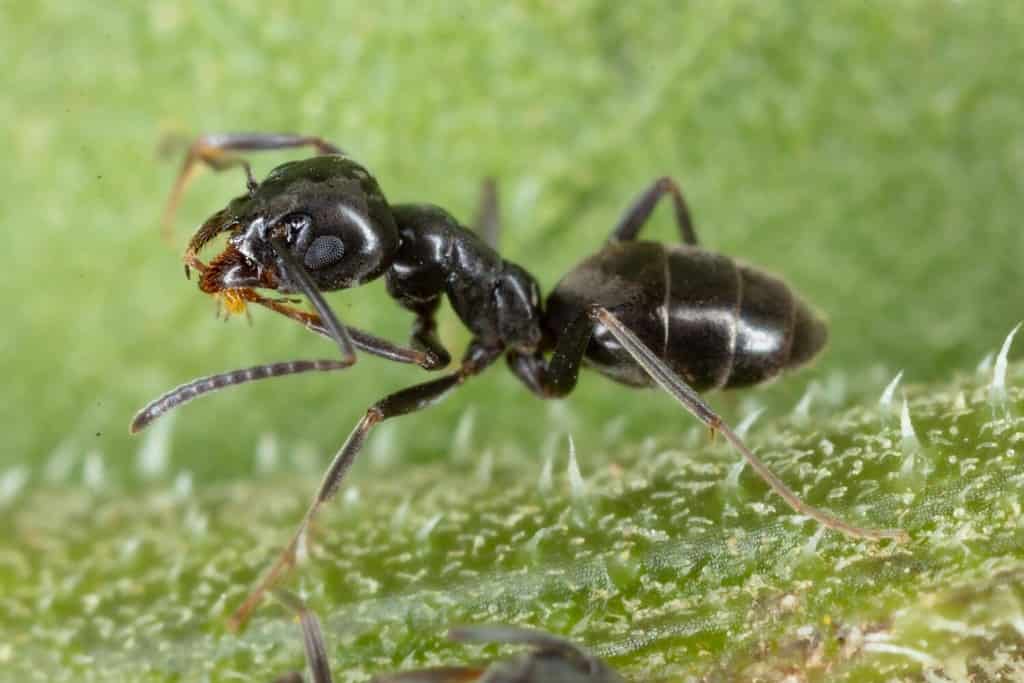
By carrying animal remains and plant material around, ants fertilize the soil.
©Wirestock Creators/Shutterstock.com
Ants play a pivotal role in fertilizing the soil and ensuring the efficient recycling of nutrients within the world’s ecosystems. Through their ceaseless activity, these tiny creatures contribute to maintaining a balanced and vibrant environment. As ants scurry about their daily routines, they carry with them bits of plants and animal remains back to their nests. This seemingly mundane behavior holds significant ecological implications.
When ants transport organic matter into their nests, they effectively introduce valuable nutrients into the soil. These nutrient-rich materials consist of decaying leaves, fruits, dead insects, or even small vertebrates that have fallen victim to nature’s cycle of life and death. Once inside the nest, this organic debris undergoes decomposition facilitated by specialized microorganisms present in ant colonies.
The process of decomposition leads to the breakdown of complex organic compounds into simpler forms. These nutrients, such as nitrogen compounds, phosphates, and potassium ions, are essential elements crucial for plant growth. Consequently, when ants forage on vegetation or stumble upon carcasses during their scavenging expeditions outside their nests—acts performed primarily in search of food—they initiate an intricate chain reaction that ultimately benefits entire ecosystems. This is one of the most awesome reasons why ants exist!
Provide Food to Others
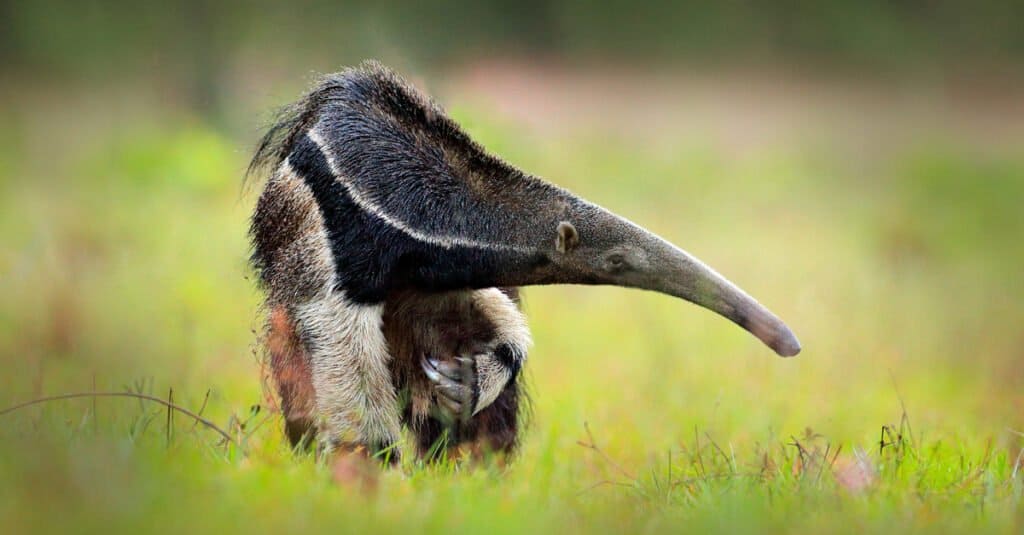
Aptly named, the
anteater
can consume up to 30,000 ants and termites per day.
©Ondrej Prosicky/Shutterstock.com
Ants, those tiny industrious creatures that often go unnoticed, play a vital role in the ecosystem. One reason why ants exist is as providers of sustenance for various other organisms. Serving as an essential source of nourishment, ants contribute to the survival and well-being of numerous arthropods, amphibians, birds, and mammals. But their significance doesn’t stop there. Astonishingly enough, even some carnivorous plants rely on ants for their own nutrition.
Within this intricate web of life, ants act as a crucial link. They offer themselves up as food to sustain the diverse array of species they interact with. Arthropods such as spiders and beetles find ants to be a delectable feast. This supports their growth and ensures their continuation within the ecosystem. Meanwhile, amphibians like frogs and salamanders eagerly seize the opportunity to make ants part of their diet.
Birds, too, benefit from these miniature marvels through both direct consumption or indirectly by feeding them to their hungry offspring. The presence of abundant ant colonies provides an accessible food source for avian species ranging from insectivorous songbirds to larger raptors.
Mammals are not exempt from reaping rewards bestowed by these diligent insects either. From small mammals like shrews and mice all the way up the food chain to larger predators such as foxes or bears. Many depend on ants at least partially for sustenance during certain seasons or periods when alternative prey may be scarce.
Why Do Ants Exist? To Eat Pests!
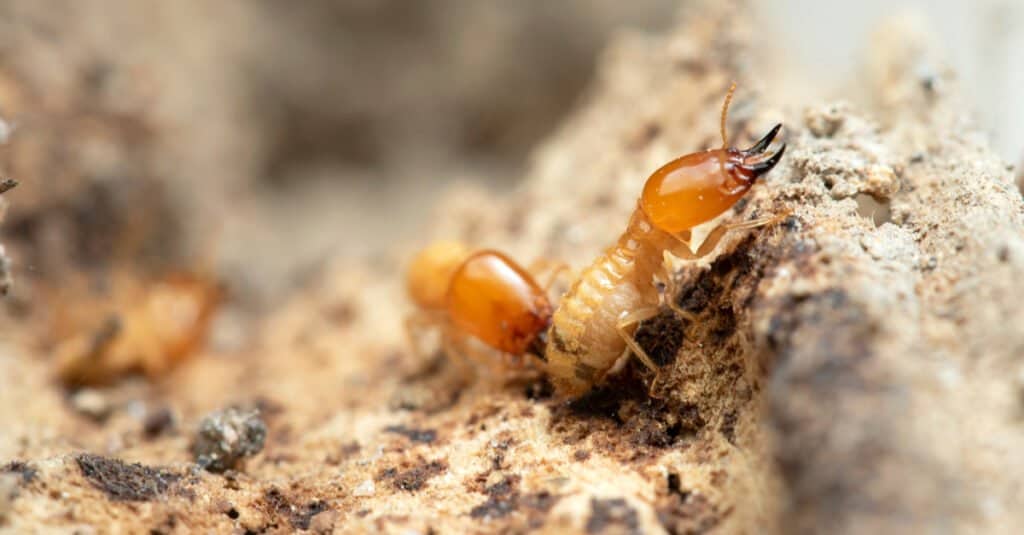
Ants help keep the population of termites down by eating them.
©bamgraphy/Shutterstock.com
Many species of ants are not only skilled predators but also efficient insect controllers. They have evolved to prey on other insects and serve as natural pest control agents in the environment.
Among their most notable culinary preferences are insect pests, such as termites. These relentless wood-munching creatures can cause significant damage to homes and structures if left unchecked. However, certain ant species have developed a taste for termites and actively seek them out as a food source.
By preying on these destructive insects, ants help maintain the delicate balance of nature by keeping termite populations in check. This natural form of pest management reduces the need for harmful chemical pesticides that can harm both humans and the environment.
Provide Protection

Some species of ants love to eat the honeydew produced by aphids.
©Somyot Mali-ngam/Shutterstock.com
Ants, small but mighty creatures, play a crucial role in the ecosystem by forming symbiotic relationships with aphids. These resourceful insects have developed a taste for honeydew, a sweet substance excreted by aphids as they feed on plant sap. Not only do ants indulge in this sugary treat, but they also go above and beyond to protect their precious food source.
In an impressive display of cooperation and mutual benefit, ants act as diligent guardians of aphids against potential threats such as ladybugs. While ladybugs are considered beneficial predators that help control aphid populations, ants recognize the value of these tiny sap-feeders to their own survival. They form a protective alliance with the vulnerable aphids to ensure a continuous supply of honeydew.
Employing various defensive tactics, ants stand guard around the colonies of feeding aphids. Their presence alone serves as an effective deterrent against ladybug intruders who may seek to devour these defenseless delicacies. Additionally, some ant species even secrete chemical substances that repel or immobilize would-be attackers.
The photo featured at the top of this post is © IamBijayaKumar/Shutterstock.com
Thank you for reading! Have some feedback for us? Contact the AZ Animals editorial team.





